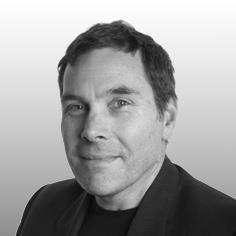WeтАЩve been setting standards to make buildings more sustainable as if they were ends in themselves. Instead, says Julian Sutherland, we should focus on what we need to achieve and make these aims the focus of our designs

We need to change the way we think about sustainability.
Too often, we see sustainability standards such as BREEAM simply as hoops to jump through; a set of time-consuming criteria, processes and assessments to complete before a building can secure the required certification.
As an industry we should instead be focusing on the results that we want to achieve, and seeking to quantify the business case for sustainability. Unfortunately, this simply canтАЩt be achieved with the tickbox mentality fostered by traditional sustainability standards.
DonтАЩt get me wrong: in the quarter of a century since the introduction of BREEAM, the standard has led to significant improvements in the sustainability of residential and office buildings in the UK and around the world, in areas such as energy use, building materials, waste and water management. But while recognising the benefits that BREEAM has brought, we must also admit that it diverts us from properly pursuing some of the most important objectives of any sustainability project.
The problem is that traditional sustainable standards get things the wrong way around: they focus on various criteria as if they were the end in themselves. ItтАЩs easy enough, for example, to achieve BREEAM health and wellbeing certification: Inclusive design? Check. Light pollution? Done. Thermal comfort? Sorted. But do any of these criteria lead to measurable improvements for our employees тАУ the very people whom this part of the standard is designed to benefit?
Any strategy begins with goals, and in the case of health and wellbeing initiatives these can be simply quantified. Take the problem of employee ill-health, which cost over 30 million working days in 2015-16, or the fact that presenteeism тАУ when people turn up unfit for work тАУ is estimated to cost at least twice as much as absenteeism. These are huge issues for both individual companies and for UK plc (just think of the countryтАЩs chronic productivity problem, for example), and new lightbulbs or cycle to work schemes wonтАЩt solve them on their own.
We should be seeking to quantify the business case for sustainability. Unfortunately, this simply canтАЩt be achieved with the tickbox mentality fostered by traditional sustainability standards
The answer to truly sustainable workplaces is surely to focus first on what we want to achieve, such as reduced absences, higher employee retention rates, and more engaged, more productive workers, and make these the focus of our designs.
Encouragingly, there are signs that architects, designers, builders and employers are beginning to embrace this new approach to wellbeing and sustainability. For example, recently we have seen the development of the WELL ║┌╢┤╔ч╟Ї Standard, a set of criteria that uses research-based strategies to advance health, happiness, mindfulness, and productivity in buildings and communities.
Crucially, WELL is focused on measurable health and welfare outcomes; in fact, its adoption in the United States is largely driven by considerations such as medical insurance premiums тАУ perhaps the strongest endorsement that the standard delivers quantifiable improvements in employeesтАЩ wellbeing.
The WELL ║┌╢┤╔ч╟Ї Standard undoubtedly gets its thinking the right way around, but thatтАЩs not to say that it can provide all the answers for delivering truly and measurably sustainable buildings. Its worth, however, is in putting peopleтАЩs wellbeing at the very heart of a building, rather than mandating certain criteria and hoping that the results will follow.
WELL works best when it is seen as a framework of principles around which to achieve strategic objectives for sustainability, rather than a set of proscriptions and prescriptions. For example, while Cundall implemented the standard in our new headquarters near St PaulтАЩs (EuropeтАЩs first building, incidentally, to achieve WELL Gold certification), we also applied One Planet Living principles, a framework based around 10 guiding principles of sustainability covering everything from health and happiness to culture and community.
Standards such as these are, as I hope IтАЩve made clear, useless unless they deliver empirical benefits, and our early post-occupancy findings are highly encouraging. Not only do our employees report much higher rates of perceived productivity, wellbeing, pride in the workplace, and sense of community, but weтАЩve also seen significantly lower rates of absenteeism and staff turnover. These are down by 20% and 25% respectively, compared with two new тАЬcontrolтАЭ offices that did not implement the standard.
Some тАЬhealth and happinessтАЭ benefits are intangible, or at least difficult to quantify with any degree of accuracy тАУ but others such as employee churn and absenteeism can easily be measured, and can equate to savings of tens or even hundreds of thousands of pounds a year.
As we move forward to a more sustainable future, we need to be guided by a more holistic set of principles that focus on achieving real, measurable outcomes to our quality of life and the impact that we have on our environment. While One Planet Living is still gaining traction, it is already delivering significant, quantifiable benefits for buildingsтАЩ users and their employers.
At the outset I called for a change of thinking, and one much-needed improvement is for us to be more ruthlessly businesslike in our approach to sustainability. There is an overwhelming business case for sustainable development; let us not be ashamed to make it.
Julian Sutherland is a partner in Cundall. He will be speaking at the upcoming British Council for Offices Annual Conference in London on 11 May



























No comments yet